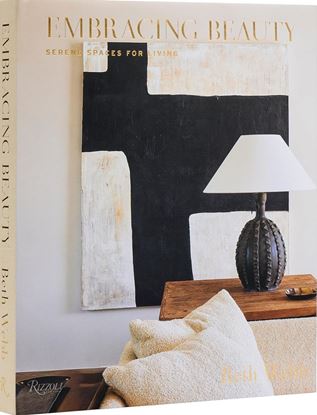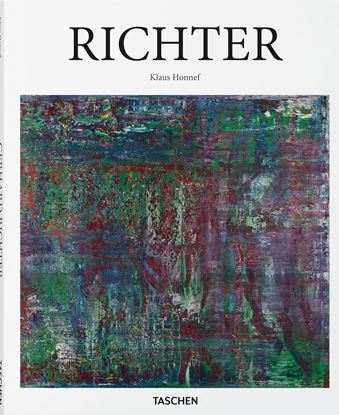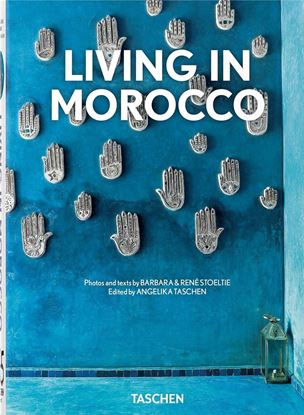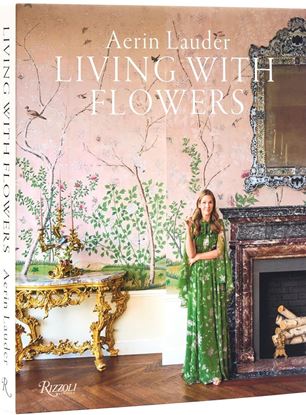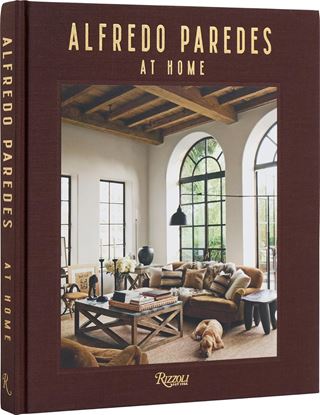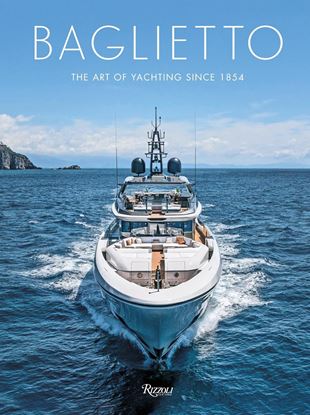

NOVEDADES
EMBRACING BEAUTY. SERENE SPACES
Inspired by her previous experience as an art dealer, Webb designs beautifully composed spaces. She believes in the power of light, and shadow, in creating atmosphere; a pale, luminous wallcovering may be balanced by the presence of antiques, or a chapel-like white bedroom may segue into a deep gray sitting room. As important is a sense of hand: the feeling of glazed earthenware, a worn oak farm table, the softness of fine linen. Webb is also motivated by the pursuit of joy and the power of beauty she makes sure these are rooms for living, for gathering with family, for refuge.
4,500
RICHTER (BA) (GB)
An encounter with Gerhard Richter, the German artist who widened horizons in the relationship between painting and reality. From early photographic paintings, along with his famous RAF cycle, to late abstract paintings, experiencing Richter’s work always offers us the unexpected and unseen. Where he once set out to liberate the medium from ideological ballast, today, faced with the overwhelming presence of digital images, he shows us the unsurpassed impact and intensity of painting. A definitive introduction to one of the greatest artists of our time spanning not only his entire career, but also 50 years of cultural, economic, and political events.
1,350
MICHELANGELO (BA) (GB)
Italian-born Michelangelo di Lodovico Buonarroti Simoni (1475–1564) was a tormented, prodigiously talented, and God-fearing Renaissance man. His manifold achievements in painting, sculpture, architecture, poetry, and engineering combined body, spirit, and God into visionary masterpieces that changed art history forever. Famed biographer Giorgio Vasari considered him the pinnacle of Renaissance achievement. His peers called him simply “Il Divino” (“the divine one”).This book provides the essential introduction to Michelangelo with all the awe-inspiring masterpieces and none of the queues and crowds. With vivid illustration and accessible texts, we explore the artist’s extraordinary figuration and celebrated style of terribilità (momentous grandeur), which allowed human and biblical drama to exist in compelling scale and fervor.
1,350
LIVING IN MOROCCO. 45TH ED.
Though it lies just across the Mediterranean from Europe, barely a stone’s throw from Spain’s southernmost tip, Morocco couldn’t possibly be farther away.With its mountainous and desert landscapes, labyrinthine souks, delectable cuisine, exquisite rugs and textiles, vibrant mosaics, fragrant odors, mesmerizing music, and welcoming people, Morocco is a most alluring and tantalizingly exotic destination. Digging a little deeper into the myth of Morocco, Barbara and René Stoeltie bring us this eclectic selection of homes to demonstrate all that is most wonderful about the Moroccan style: from tiled, turquoise swimming pools and lavish gardens to carved wooden furniture and jade-colored marble fountains.With more than 500 pages featuring stunning, inspiring photographs, flipping through these fairy tale-like visions of exotic havens (ideally while sipping a steaming cup of sweet, fragrant mint tea) will instantly whisk you away.
2,300
WALTON FORD. 45TH ED. (INT)
In this stunning but sinister visual universe, beasts and birds are not mere aesthetic objects but dynamic actors in allegorical struggles: a wild turkey crushes a small parrot in its claw; a troupe of monkeys wreaks havoc on a formal dinner table; an American buffalo is surrounded by bloodied white wolves. In dazzling watercolor, the images impress as much for their impeccable realism as they do for their complex narratives.
2,200
AERIN LAUDER: LIVING WITH FLOWERS
Aerin Lauder’s love of flowers is deeply personal, being passed down to her by her celebrated grandmother, Estée Lauder, as well as her mother, Jo Carole Lauder. From fresh bouquets to floral patterns on wallpaper, fabric, and tabletop pieces, in Living with Flowers Lauder shares the many ways she brings flowers into her home. Whether it’s an arrangement of daisies in the kitchen to welcome friends or family for dinner, or a single stem on her desk to brighten the workday, flowers are an essential part of her home and her lifestyle.
4,200
ALFREDO PAREDES AT HOME
While touring readers through four of his own homes, Paredes shares the key elements in his creative process, giving us access to the same tools he uses in every home to decorate rooms that feel modern even as they glamorize the past, to show us how an environment has real power to transform our very state of mind. Paredes is renowned for being a master of extrapolating an entire theme from one unique item, say transforming the stripe of a crisp Oxford shirt into a unique upholstery perfect for the seaside, or finding inspiration for a couch’s decorative fringe in a well-worn piece of leather ranch gear. He is said to have “perfect visual pitch,” creating vignettes and rooms with an energy that feels undeniably masculine and sophisticated thanks to dark wood, iron railings, rustic fabrics, an overall patina, and soft furnishings in soothing earth tones.
4,200
BAGLIETTO THE ART OF YACHTING SINCE 1854
Where does craftsmanship end and art begin? What makes something a product, a brand impervious to time and fashions? These are the questions posed while strolling between the past and the present of Baglietto, the Italian shipyard that has been building world-class yachts for 170 years.
Success is not built in an instant. Being good, looking to the future, imposing a style that lasts over time is the gamble every entrepreneur takes. There are not many who succeed, which is why those who reach the age of 170 deserve to be studied, as well as celebrated. Baglietto is now a kind of great international club, access to which serves the right mix of passion for the sea, refined taste for boats that is never over-the-top but rather soberly chic, and, of course, the right spending capacity for objects that cost.
4,995
EL ARTE DE LA GUERRA (EDIMAT) (TB) (LM)
Ssu Ma Ch'ien a quien se ha descrito como el «Gran Historiador de China», sitúa el momento en que se escribieron Los trece capítulos de El arte de la guerra, hacia el año 500 antes de nuestra era. Las consideraciones de orden psicológico alcanzan con su autor, Sun Tzu, una sutileza y una profundidad inusitadas. El factor moral se considera como un elemento capaz de potenciar decisivamente la combatividad y la energía de los soldados. Para crear y mantener esta moral es necesario encontrar el punto de equilibrio entre el rigor y la indulgencia. Por otra parte, en lo que respecta a las tropas enemigas, es necesario minar su moral. Sun Tzu propone un método mucho más sutil para obligar al enemigo a que relaje su moral: «Hay que dejar una salida a un enemigo cercado».
250


